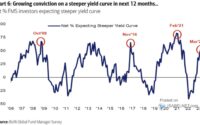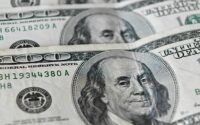Powell Reiterates Fed Needs More Confidence on Inflation to Cut
(Bloomberg) — Federal Reserve Chair Jerome Powell reiterated to lawmakers that the US central bank is in no rush to cut interest rates until policymakers are convinced they have won their battle over inflation.
Most Read from Bloomberg
In prepared testimony, the Fed chief said it will likely be appropriate to begin lower borrowing costs “at some point this year,” but made clear officials are not ready yet.
The remarks echoed a consistent message from nearly every Fed official in recent weeks: The economy and labor market are strong, meaning policymakers have time to wait for more evidence that inflation is headed back to their goal before cutting interest rates.
“The committee does not expect that it will be appropriate to reduce the target range until it has gained greater confidence that inflation is moving sustainably toward 2%,” Powell said, adding later that officials would approach the decision “carefully and thoughtfully.”
The Fed chief is on Capitol Hill for the first of two days of his semiannual monetary policy testimony, and is scheduled to appear before the Senate Banking Committee on Thursday.
Read More: Powell to Face Pressure on Rate Cuts, Capital Rules at Hearings
Treasury yields remained lower on the day after the remarks were released, and S&P 500 index rose while the dollar was lower.
Fed officials are in the last rounds of an aggressive fight to contain inflation. After raising their benchmark federal funds rate more than five percentage points starting in March 2022, they’ve held rates steady since July amid easing price pressures.
Central bankers are now grappling with how soon and how far they should lower rates. Cut too early, and officials worry they could fuel a pick-up in economic activity that keeps inflation above 2% — the rate they see as appropriate for a healthy economy. Keep borrowing costs elevated for too long and they risk tipping the economy into a recession.
“We believe that our policy rate is likely at its peak for this tightening cycle,” Powell said in his prepared remarks, repeating language used at his last press conference on Jan. 31. “If the economy evolves broadly as expected, it will likely be appropriate to begin dialing back policy restraint at some point this year. But the economic outlook is uncertain, and ongoing progress toward our 2% inflation objective is not assured.”
Asked later when the Fed might be ready to cut, Powell added, “We think because of the strength in the economy and the strength in the labor market and the progress we’ve made, we can approach that step carefully and thoughtfully.”
Capital Changes
Powell also said the Fed is likely to significantly change its plan to require large lenders to hold more capital.
“I do expect there will be broad and material changes to the proposal,” he told lawmakers on the House Financial Services Committee on Wednesday.
Powell said that no decisions had been made, but that it was possible regulators could scrap the plan proposed last July and propose a new version. “It’s a very plausible option,” he said.
The plan, from Fed Vice Chair for Supervision Michael Barr, would ramp up capital requirements for big banks by almost 20%, and has drawn intense criticism from GOP lawmakers and the banking indsutry.
Read More: Fed’s Michael Barr Is Open to Concessions on Bank Capital Rules
Strong Economy
Inflation slowed to a 2.4% rate for the 12 months ending in January, down from a peak of 7.1% in June 2022. But price pressures accelerated from December, and an underlying measure often cited by Powell — services prices excluding shelter and energy — is still tracking higher than its pre-pandemic trend.
At the same time, demand for workers has remained strong, with employers adding 353,000 jobs in January and economists forecasting another 200,000 added in February.
Fed officials have said high interest rates should continue to ripple through the economy and eventually slow growth, which has been surprisingly robust over the past year. Still, some forecasters have lifted their estimates for economic output in the first quarter, due to expectations for higher consumer spending.
Policymakers have responded to the economy’s surprising strength by indicating that they’ll hold rates at a high level and, once they begin cutting, will probably lower them at a slower and potentially less regular pace than in the past.
Since their January meeting, officials have pushed back aggressively on expectations that they will cut rates when they meet on March 19-20. Investors are now betting the first rate cut will come in June. They also expect between three and four rate cuts this year, in line with Fed officials’ median forecast in December. Policymakers will release updated rate projections at their meeting this month.
Meanwhile, Democratic lawmakers are growing impatient with the US central bank ahead of the November elections. Sherrod Brown, the Senate Banking Committee chair who’s in a tough reelection battle in Ohio, urged the Fed to cut rates “early this year” in a Jan. 30 letter to Powell, arguing that high rates are hurting small businesses and putting homeownership out of reach for many Americans.
(Updates with additional Powell comments in eleventh paragraph.)
Most Read from Bloomberg Businessweek
©2024 Bloomberg L.P.
[ad_2]
Source link


